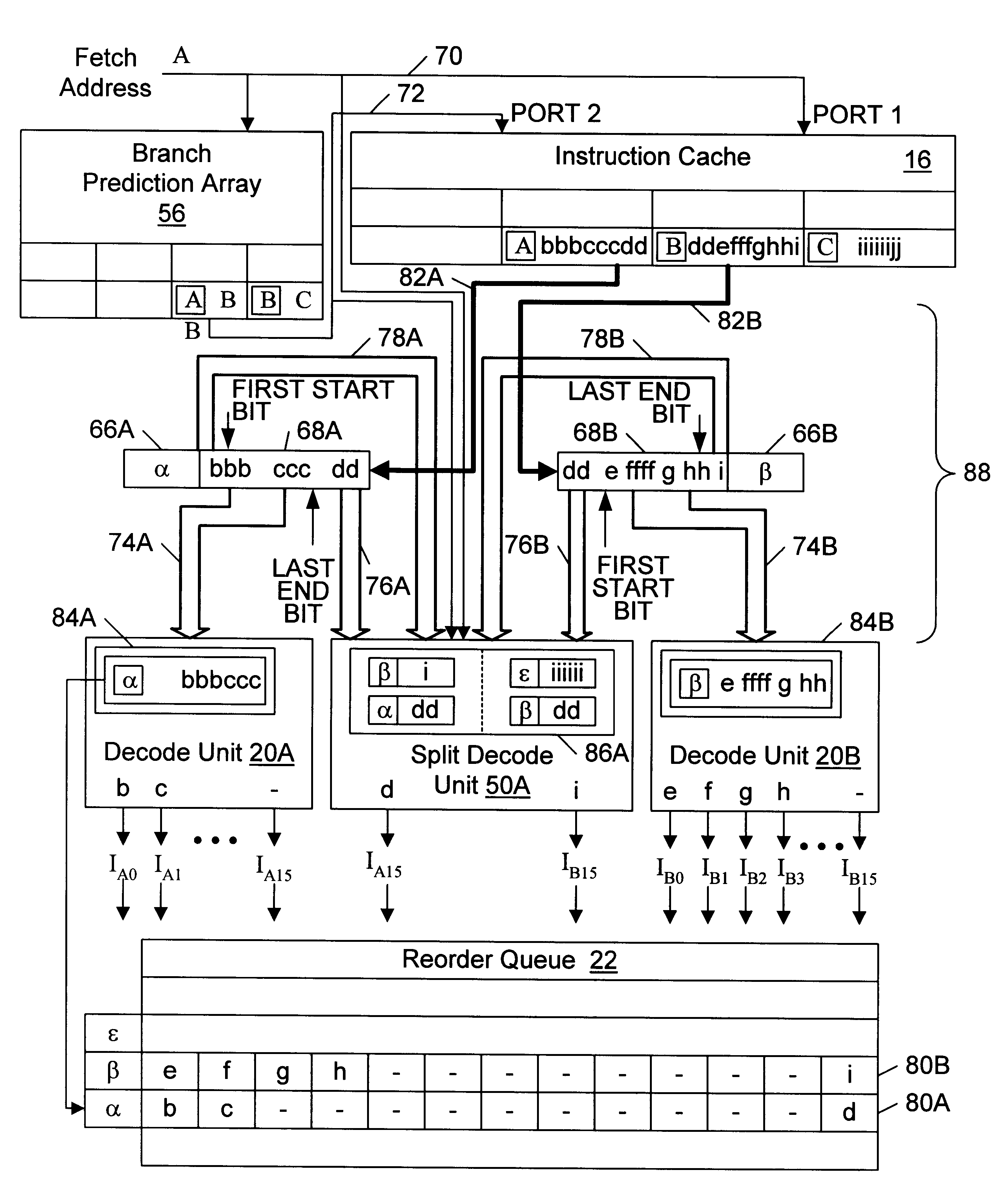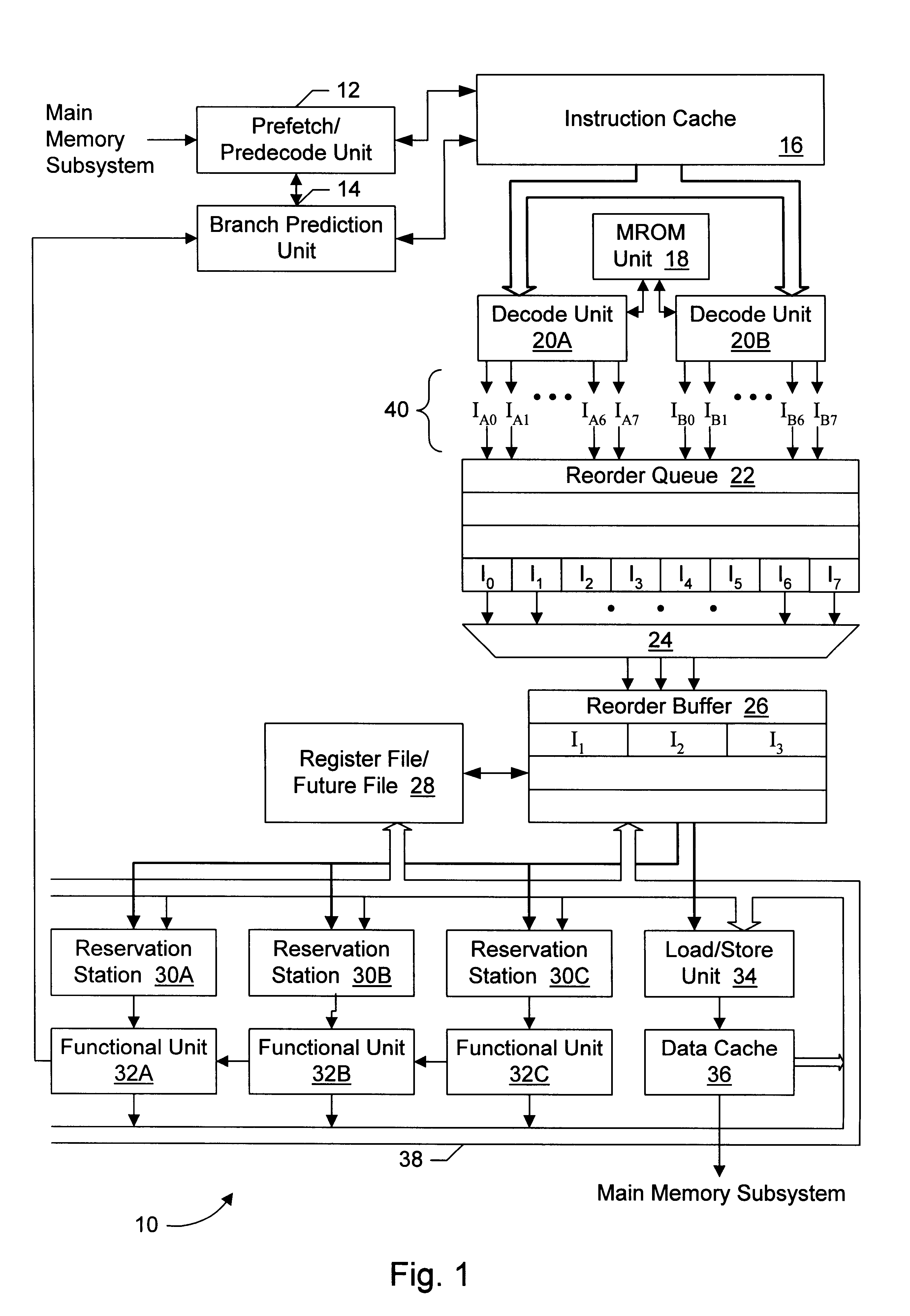Using multiple decoders and a reorder queue to decode instructions out of order
a decoder and instruction technology, applied in the field of decoding instructions out of program order, can solve problems such as pipeline stalling, difficult to determine which instructions after the branch, and stage of the pipeline being unable to determine which instructions
- Summary
- Abstract
- Description
- Claims
- Application Information
AI Technical Summary
Problems solved by technology
Method used
Image
Examples
Embodiment Construction
Turning now to FIG. 1, a block diagram of one embodiment of a microprocessor 10 that is configured to decode instructions out of order is shown. In this embodiment, microprocessor 10 includes a prefetch / predecode unit 12 and a branch prediction unit 14 coupled to an instruction cache 16. Decode units 20A-B are coupled between instruction cache 16 and a reorder queue 22. A microcode read-only memory (MROM) unit 18 is also coupled to each decode unit 20A-B. Reorder queue 22 is coupled to a reorder buffer 26 by a multiplexer 24. Reorder buffer 26 is coupled to a register / future file 28, a number of reservations stations 30A-C, and a load / store unit 34. Reservations stations 30A-C are coupled to a corresponding number of functional units 32A-C, and load / store unit 34 is coupled to a data cache 36. Finally, a result bus 38 couples functional units 32A-C and data cache 36 to reorder buffer 26, register / future file 28, load / store unit 34, and reservations stations 30A-C.
Generally speaking,...
PUM
 Login to View More
Login to View More Abstract
Description
Claims
Application Information
 Login to View More
Login to View More - R&D
- Intellectual Property
- Life Sciences
- Materials
- Tech Scout
- Unparalleled Data Quality
- Higher Quality Content
- 60% Fewer Hallucinations
Browse by: Latest US Patents, China's latest patents, Technical Efficacy Thesaurus, Application Domain, Technology Topic, Popular Technical Reports.
© 2025 PatSnap. All rights reserved.Legal|Privacy policy|Modern Slavery Act Transparency Statement|Sitemap|About US| Contact US: help@patsnap.com



